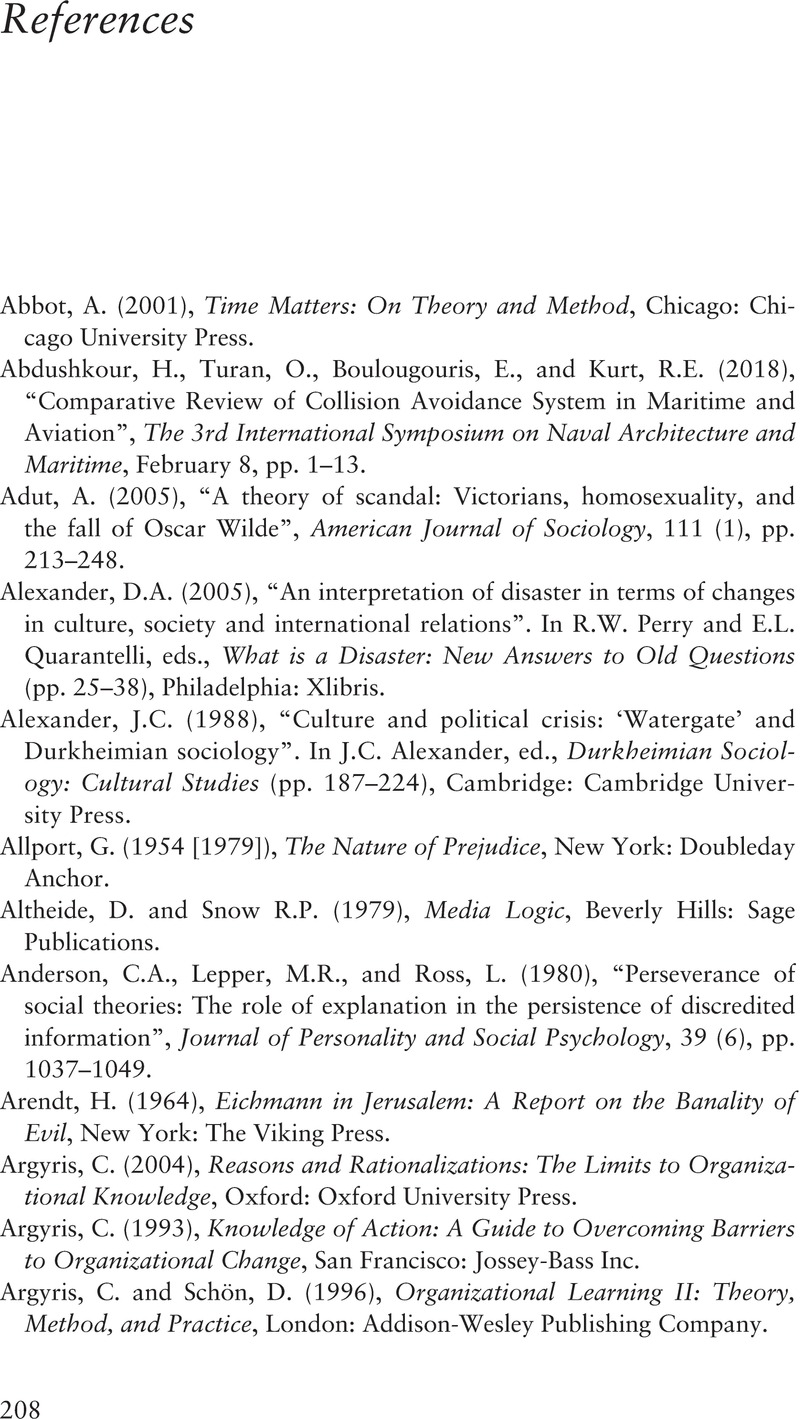Book contents
- Scapegoating
- Scapegoating
- Copyright page
- Contents
- Figures
- Tables
- Introduction
- 1 Forms and Types of Scapegoat
- 2 The Scapegoat as an Instrument of Organizational Rationality
- 3 Corporate Scapegoating: The Costa Concordia Accident
- 4 How to Spot Organizational Scapegoats
- 5 Organizations and Law: Inquiry Logics and Policies of Blame
- 6 Conclusions
- References
- Sources
- Index
- References
References
Published online by Cambridge University Press: 01 June 2023
- Scapegoating
- Scapegoating
- Copyright page
- Contents
- Figures
- Tables
- Introduction
- 1 Forms and Types of Scapegoat
- 2 The Scapegoat as an Instrument of Organizational Rationality
- 3 Corporate Scapegoating: The Costa Concordia Accident
- 4 How to Spot Organizational Scapegoats
- 5 Organizations and Law: Inquiry Logics and Policies of Blame
- 6 Conclusions
- References
- Sources
- Index
- References
Summary

- Type
- Chapter
- Information
- ScapegoatingHow Organizations Assign Blame, pp. 208 - 234Publisher: Cambridge University PressPrint publication year: 2023



